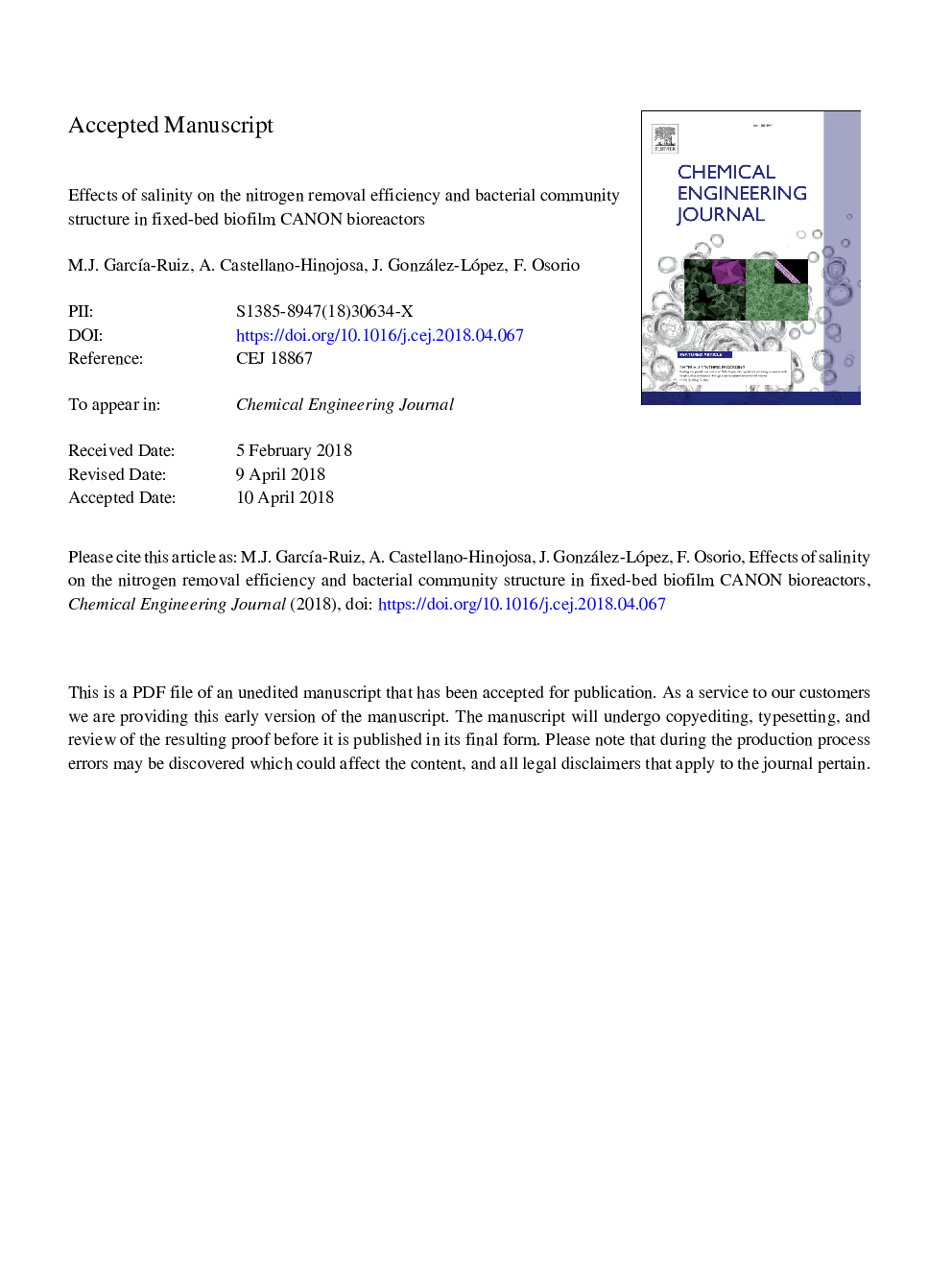| Article ID | Journal | Published Year | Pages | File Type |
|---|---|---|---|---|
| 6579032 | Chemical Engineering Journal | 2018 | 34 Pages |
Abstract
The discovery of anaerobic ammonium oxidation processes led to the development of innovative nitrogen removal technologies, which are more cost-effective and environmentally friendly than conventional activated sludge systems. In this study, the bacterial community structure was determined as well as the nitrogen removal efficiencies in four fixed-bed biofilm bioreactors, working under different salt concentrations (0, 3, 25, and 45â¯gâ¯Lâ1 of sodium chloride (NaCl)) and at hydraulic retention times (HRT) of 6 and 12â¯h. The influent total nitrogen concentration was 250â¯mgâ¯Lâ1. The results showed a clear inhibition in the nitrogen removal capacity of the process that was directly related to the salt concentration in the influent, most likely due to changes in the bacterial community structure; increases in the NaCl concentration provoked the inhibition of Candidatus Brocardia and Nitrosomonas, whereas heterotrophic phylotypes such as Marinobacter proliferated. An evident adaptation of the anammox microorganisms at 3â¯gâ¯NaClâ¯Lâ1 was observed, whereas ammonia and nitrite oxidizing bacteria drastically decreased at 25 and 45â¯gâ¯NaClâ¯Lâ1. Total nitrogen efficiencies for 6â¯h of HRT were 87.68, 64.25, 38.79, and 19.74%, for 0, 3, 25, and 45â¯gâ¯NaClâ¯Lâ1, respectively. No significant effects were detected on the performance of the bioreactors and bacterial diversity under different HRT. Our study may be useful for the implementation of CANON systems at real-scale, by increasing the knowledge on the bacterial community at different NaCl concentrations and the performance of this novel technology for saline wastewater treatment.
Related Topics
Physical Sciences and Engineering
Chemical Engineering
Chemical Engineering (General)
Authors
M.J. GarcÃa-Ruiz, A. Castellano-Hinojosa, J. González-López, F. Osorio,
